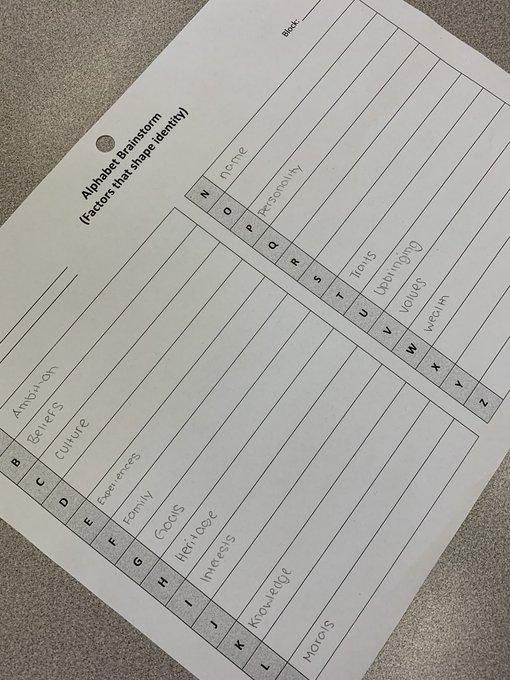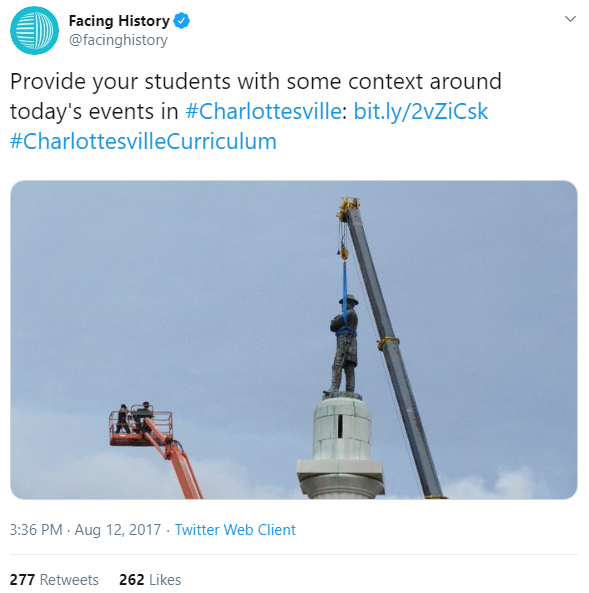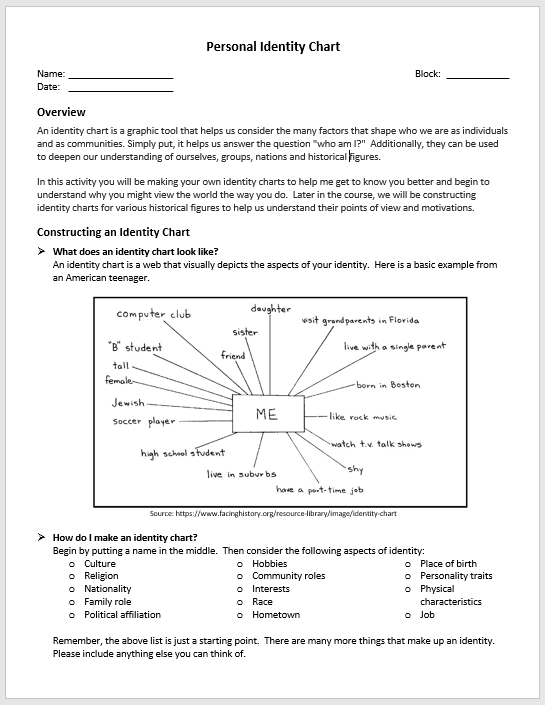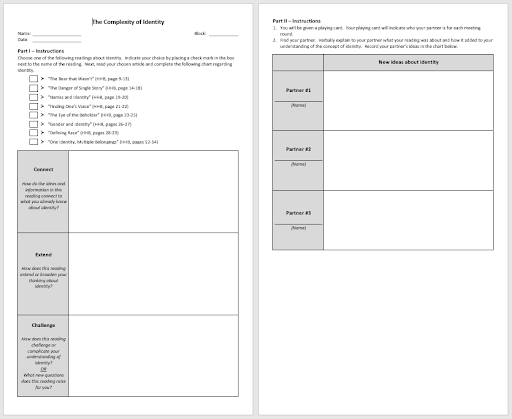Over the past number of years, I have developed quite a lot of love for Facing History and Ourselves. So much so that I thought this Valentine’s Day I would share my love to other educators by sharing five incredible resources, approaches and strategies that Facing History and Ourselves has to offer that I hope will be a gift to fellow teachers and to your classrooms.
1. Facing History has resources and strategies to help students gain and develop a deeper understanding of their personal identities.
Adolescence is such a trying time for our students. Many seem at odds with the desire to acknowledge and stay true to their identities coupled with the pressure to fit in. Facing History’s initial focus on 'The Individual and Society' – the starting place of any FHAO unit or course – allows students to start with themselves and build an understanding of how identity shapes choices and ultimately history. In doing so, students also gain a much deeper appreciation for the others in their class. They make connections with peers they otherwise might not have and form a deeply caring classroom community in which they ‘hold space’ for each other. In fact, one of my Genocide Studies classes ended the course by referring to their classmates as ‘family.’ What follows is a sampling of how we learn about identity in ‘The Individual and Society’ unit.
 Alphabet Brainstorm – I love to use the alphabet brainstorm at the beginning of my Genocide Studies course when we begin discussing the concept of identity. First, we discuss a very simple definition of identity. Then, students work in groups to brainstorm as many factors as they can that can shape a person’s identity. I like to make this a friendly competition between groups and am always surprised at the number of factors they can brainstorm.
Alphabet Brainstorm – I love to use the alphabet brainstorm at the beginning of my Genocide Studies course when we begin discussing the concept of identity. First, we discuss a very simple definition of identity. Then, students work in groups to brainstorm as many factors as they can that can shape a person’s identity. I like to make this a friendly competition between groups and am always surprised at the number of factors they can brainstorm.
Personal Identity Charts – I follow the Alphabet Brainstorm with an activity in which students begin to reflect on their own identity. To do so, they construct a personal identity chart and share with others.
Connect, Extend, Challenge – We follow up our identity chart assignment with a ‘“Cconnect, Extend, Challenge’” activity in which students choose a reading that focuses on the theme of identity. They read it, connect it to what they already know about identity, explain how it extends and challenges their thinking on the topic. All readings can be found in the Holocaust and Human Behaviour textbook.
2. Facing History and Ourselves' approach and resources show students that even one person can make a difference.
When people hear that I teach a course called Genocide Studies their immediate response is always something along the lines of “I don’t know how you do it” or “isn’t it depressing to teach about repression, violence and death everyday?” “Of course it’s emotionally draining,” is my usual answer. What I follow with often catches people off guard, “But there’s also a lot of hope and joy.” I can understand why such a response might be surprising, but it’s the truth. Much of this hope and joy comes through Facing History’s case studies and the focus on choices. By exploring historical decisions, students come to realize that history is a collection of individual choices that either fracture society or weave together to strengthen it. More importantly, they realize the potential ripple effect – both positive and negative – that their own choices can have. They learn to recognize that social injustices can balloon into something much bigger and harder to stop so they must intervene early on. They come to realize that by identifying and activating particular levers of power they can inspire others to work towards social and political change.
3. Fellow Teachers: There is an abundance of thoughtfully curated lessons and resources!
Maps, images, readings, videos, lesson plans and more! I never cease to be amazed by the abundance of Facing History and Ourselves resources. Often, when I am looking for a specific reading, video or lesson on the website I come across many others that I want to try. Additionally, the “Teaching Strategies” page is filled with so many hidden gems that I return to repeatedly. What I particularly like about these strategies is that they offer an entry point for every learner and every age but are very thorough and rigorous. Consistently using these strategies allows me to develop a set of learning routines that students become increasingly comfortable with over the course of the year. In fact, whenever I have a student teacher this is the first place I direct them to for tried and true strategies. They are never disappointed.
Here are a few of my favourites:

Gallery Walk & See, Think, Wonder – In this photo, students are conducting a gallery walk on the topic of “Life before the Armenian Genocide.” As they move from image to image, students are asked to complete a graphic organizer about what they see in the image, what they think is happening, and what the image makes them wonder.
4. Facing History’s Resources are immediately responsive in times of tragedy.
Unfortunately, there have been more than a few occasions over the course of my career when I have woken up to a news report of a hate crime. Although as educators we have a responsibility to discuss such stories with our students, doing so is fraught with risk. How can I bring students safely in and safely out of such heavy and complex topics when I only have the morning commute to prepare? Luckily, I have learned that if I take a few minutes to check Facing History on Twitter or Facebook there are usually suggestions. From simple reminders and tips on how to deal with emotional content to specific lesson ideas, I feel well equipped to face the class. Another excellent place to look is the Facing Today: A Facing History Blog. 
5. Teacher to teacher: Receive the gift of a vast network of caring and generous teachers.
Over the years, I have engaged in a number of Facing History professional development opportunities both in person and online. Through these experiences, I have had the chance to connect with and learn from a diverse array of educators. To say they have deeply impacted my professional practice would be an understatement. While we may not see each other every day, I know that I can reach out to any one of them with a question should I need to.
Spread the love this Valentine's Day by sharing this with 3 friends!
-1.png?width=1024&name=Valentines%20E-Card%20FH%202020%20(1)-1.png)



